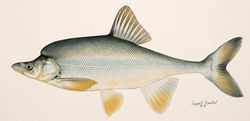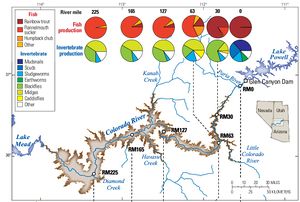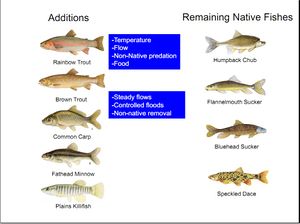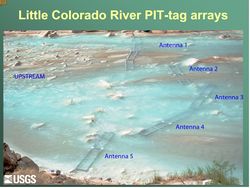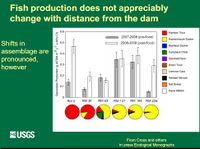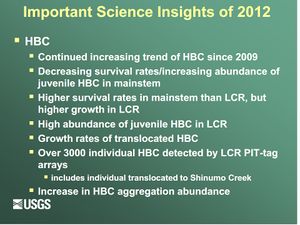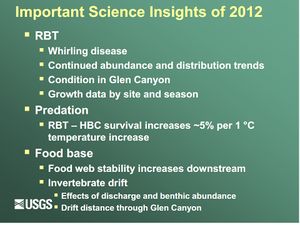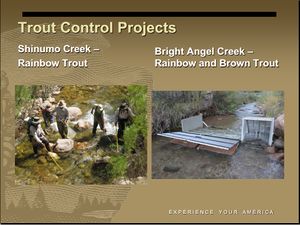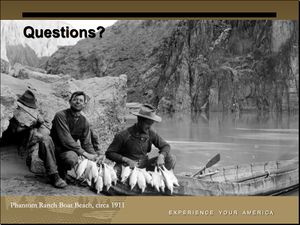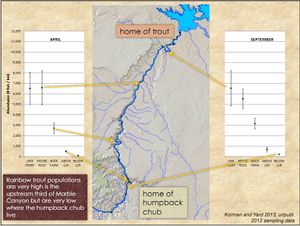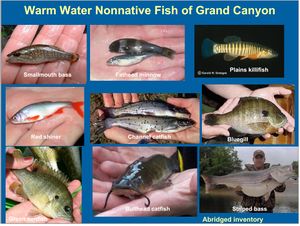Difference between revisions of "FISH"
(add RValdez Talus shoreline habitat used by HBC.doc) |
(add GRAPH- Fish and Invertabrate assemblige) |
||
| Line 12: | Line 12: | ||
<tr style='mso-yfti-irow:0;mso-yfti-firstrow:yes'> | <tr style='mso-yfti-irow:0;mso-yfti-firstrow:yes'> | ||
<td width=40% valign=bottom align=left style='width:2.05in;padding:0in 5.4pt 0in 5.4pt'> | <td width=40% valign=bottom align=left style='width:2.05in;padding:0in 5.4pt 0in 5.4pt'> | ||
| − | <p class=MsoNormal>[[Image:Humpback-large- PIC.jpg|thumb|left|250px]] </p> | + | <p class=MsoNormal>[[Image:Humpback-large- PIC.jpg|thumb|left|250px]][[Image:GRAPH- Fish and Invertabrate assemblige.jpg|thumb]]</p> |
</td> | </td> | ||
</tr> | </tr> | ||
Revision as of 09:18, 16 May 2014
|
Description The Colorado River running through Grand Canyon once hosted one of the most distinctive fish assemblages in North America. The wild Colorado River presented fish with a challenging and variable aquatic habitat: very large spring floods, near-freezing winter temperatures, warm summer temperatures, and a heavy silt load. Note that only eight fish species were native to Grand Canyon. Of the eight species, six are endemic, meaning that they are only found in the Colorado River basin. (NPS)
|
| TBD (Motions) |
TBD (TBD) |
TBD (TBD) |
|---|
|
LINK: usbr/amp/amwg/mtgs/13feb20/Attach_07b||||| |
